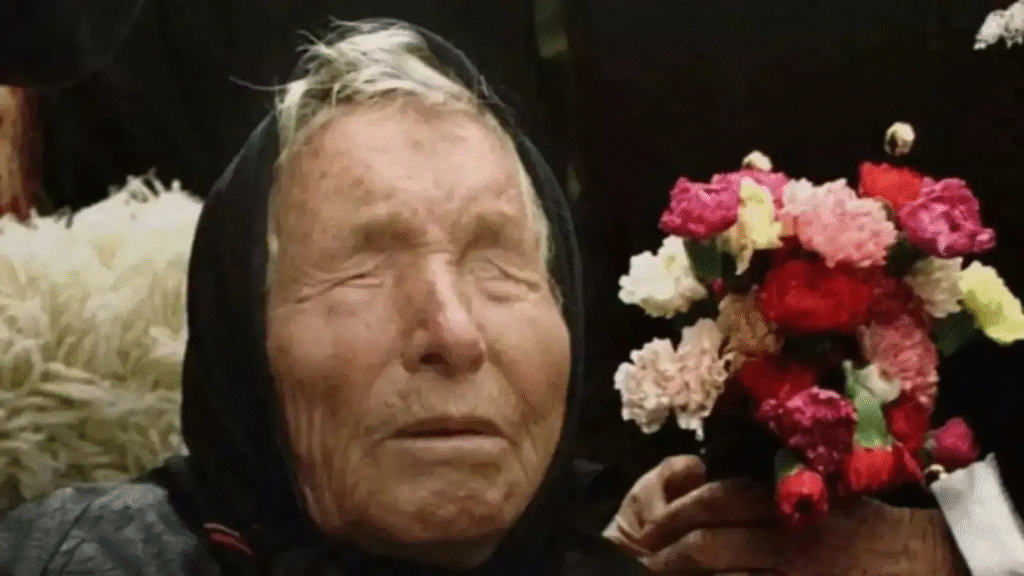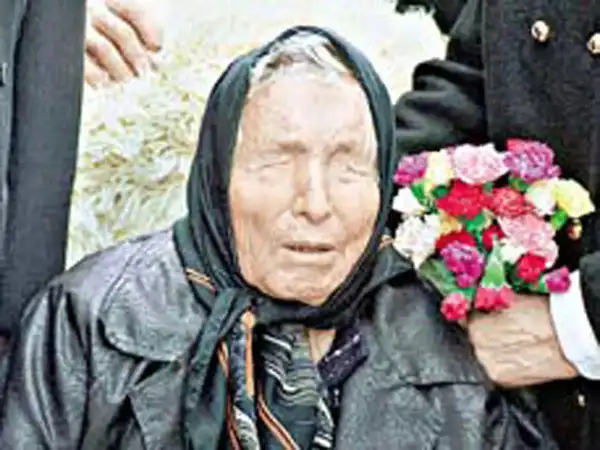
The world continues to grapple with the lingering shadow of the COVID-19 pandemic. Just as societies began adjusting to the “new normal,” fresh waves of infections have reignited fear and uncertainty across the globe. In this climate of anxiety, the ancient prophecies of Baba Vanga—a mystic widely known as the “Nostradamus of the Balkans”—have resurfaced, drawing attention from believers and skeptics alike. One prophecy in particular has caught the imagination of many: the alleged prediction of COVID-19’s return, stirring conversations and debates across social media, news platforms, and public forums.
Baba Vanga, a blind Bulgarian clairvoyant who passed away in 1996, remains a controversial and enigmatic figure. Her followers claim that many of her predictions have come true, including significant geopolitical events and natural disasters. Now, as new COVID-19 variants emerge and vaccination campaigns face challenges, some interpret her words as a forewarning of what lies ahead. But what exactly did Baba Vanga predict about COVID-19? And is there any credible basis to link her prophecy to today’s rising cases?
The Legacy of Baba Vanga: Mysticism Meets Modern Pandemic Fear
Baba Vanga’s name often surfaces in moments of global crisis. Her predictions have been widely circulated online, sometimes taking on a life of their own, amplified by viral posts and sensational headlines. While skeptics dismiss her as a product of folklore and wishful thinking, her influence remains undeniable among millions who believe her visions transcend time.
Her prophecies, often vague and metaphorical, are usually interpreted in hindsight, making it easy to connect them to real events after they happen. Yet, with the world still battling the repercussions of the coronavirus pandemic, the urgency of such predictions seems more poignant than ever.
The claim that Baba Vanga foresaw the return of COVID-19 is rooted in interpretations of her cryptic statements about a “new disease” and “a virus from the east” that would “spread around the world and change life forever.” These descriptions bear uncanny resemblance to the events of 2020 when COVID-19 first emerged in Wuhan, China, and quickly spread globally, disrupting every aspect of human life.
But as new variants such as Omicron and Delta triggered fresh waves of infections in 2022 and 2023, believers argue that Baba Vanga’s prophecy hints at a recurring threat, not just a one-time event. This idea has captured the imagination of many, as rising case counts fuel fears of another prolonged global crisis.
Connecting the Dots: Baba Vanga’s Words in the Context of COVID-19 Resurgence
Analyzing Baba Vanga’s predictions requires careful consideration of her style. She often spoke in metaphors and symbolic language rather than concrete terms. For example, references to “black clouds” or “a great plague from the east” could metaphorically signify a pandemic but lack explicit details to confirm the identity of the disease.
The resurfacing of COVID-19 in many countries in late 2024 and early 2025 has rekindled interest in these vague but haunting words. Governments worldwide have reported new outbreaks, some linked to variants that evade previous immunity, challenging global health systems anew. Public health experts stress that while the virus is unlikely to disappear completely, its impact can be managed through vaccines, treatments, and preventive measures.
Yet, social media has amplified the notion that Baba Vanga predicted this resurgence precisely, leading to a spike in searches and online discussions about her prophecies. Videos and posts claiming to decode her predictions have gone viral, feeding the curiosity and fear of a public eager for answers.
This phenomenon highlights the intersection of pandemic fatigue and humanity’s enduring fascination with prophecy. When faced with uncertainty, people often seek comfort or warnings in mystical or prophetic figures who appear to offer a glimpse into the future. Baba Vanga’s enduring legacy as a seer is a testament to this human desire to make sense of chaos through narrative.
The Scientific Reality Behind COVID-19’s Return and Prophetic Interpretation
While Baba Vanga’s predictions captivate the imagination, it’s essential to ground the discussion in scientific facts. The return of COVID-19 cases is a predictable pattern in the life cycle of viruses, especially respiratory viruses. Influenza and other coronaviruses have long exhibited seasonal resurgences, often aggravated by factors such as virus mutations, waning immunity, and human behavior changes.
Epidemiologists emphasize that the virus’s return does not imply a supernatural or prophetic cause but is instead a biological inevitability. The virus continues to evolve, adapting to human defenses and occasionally producing variants that spread more easily or evade immune responses. This dynamic necessitates ongoing vigilance, vaccination updates, and adaptive public health strategies.
That said, the human need to interpret these events through the lens of prophecy is understandable. In times of crisis, prophecy serves as both a warning and a coping mechanism, a way to impose order on uncertainty. Baba Vanga’s alleged foresight about COVID-19’s persistence can be seen as part of this broader cultural response to the pandemic’s upheaval.
The Cultural Impact of Baba Vanga’s Prophecies in the Pandemic Era

The cultural significance of Baba Vanga’s prophecies transcends the question of their literal accuracy. For many, they represent a bridge between past mysticism and present-day realities. In Eastern Europe and beyond, her predictions continue to shape public discourse, media narratives, and popular culture.
In the pandemic era, her name has become synonymous with caution and premonition. This association has led to the proliferation of books, documentaries, and online content exploring her life and prophecies, often blending historical fact with speculative interpretation. The allure lies in the possibility that her visions provide clues to an unpredictable future, particularly in an age marked by global crises and rapid change.
Moreover, Baba Vanga’s prophecies underscore a universal human theme: the search for meaning in adversity. Whether through science, religion, or mysticism, people strive to find patterns and explanations for events that seem random or overwhelming. In this context, Baba Vanga’s words serve as a reminder of the enduring power of hope and the quest for understanding.
Global Response to the New COVID-19 Wave: Health Measures and Public Sentiment
As new COVID-19 infections rise in parts of the world, governments are once again tightening restrictions and promoting vaccination. This reaction, while rooted in epidemiological data, also feeds into the narrative shaped by prophetic interpretations. Some citizens are driven to seek spiritual or mystical explanations, while others turn to science and evidence-based approaches to curb the spread.
Public health officials are emphasizing the importance of booster shots, mask mandates in crowded spaces, and increased testing to identify cases early. The global community is reminded that the virus’s persistence is a challenge to be met with resilience and preparedness rather than panic.
At the same time, conspiracy theories and misinformation have surged, partly fueled by the propagation of prophetic claims. This underscores the delicate balance that authorities must strike between educating the public and managing fears that can hinder effective responses.
The Role of Media in Shaping the Narrative Around Baba Vanga and COVID-19
Media outlets play a critical role in how Baba Vanga’s prophecy is perceived today. Sensational headlines and viral posts contribute to the rapid spread of information—both factual and speculative. The challenge lies in maintaining journalistic integrity while addressing public interest in mysticism and prophecy.
Responsible reporting should clarify that while Baba Vanga’s prophecies attract attention, they do not replace scientific understanding or public health guidance. At the same time, the media must acknowledge the cultural relevance of such prophecies and how they influence public sentiment.
The ongoing pandemic has revealed a growing appetite for alternative explanations, which often fill the gaps left by uncertainty. Media literacy and critical thinking remain essential tools in navigating this complex landscape.
Looking Ahead: What Baba Vanga’s Prophecy Teaches Us About the Future
Whether or not Baba Vanga truly foresaw the return of COVID-19, her prophecy resonates because it reflects a universal truth: human life is marked by cycles of challenge and renewal. The pandemic, like many crises before it, reminds us of our vulnerability but also of our capacity to adapt and overcome.
Her words can be seen as a metaphorical call to vigilance and preparedness. The virus’s return is not a sign of doom but an opportunity for societies to reinforce healthcare systems, invest in research, and foster global cooperation.
In this light, Baba Vanga’s legacy is not merely about prediction but about inspiring resilience. As the world navigates the uncertain waters of the pandemic’s next phase, her prophecy reminds us to stay alert, informed, and hopeful.
The Human Desire for Prophecy and Meaning in a Changing World
At its core, the fascination with Baba Vanga and her COVID-19 prophecy reveals a deep human desire for certainty and meaning. In times of upheaval, prophecy offers a narrative that helps people understand complex realities and prepare emotionally for what might come.
This impulse is not unique to our time. Throughout history, humans have turned to prophets, seers, and mystics to find guidance amid chaos. Baba Vanga’s continuing influence is part of this timeless tradition.
In a world transformed by technology, science, and globalization, such spiritual voices remind us that uncertainty is a shared experience, and seeking understanding—whether through science or mysticism—is a fundamental part of the human condition.
Conclusion: Bridging Science, Prophecy, and Hope
The renewed interest in Baba Vanga’s prophecy about COVID-19’s return captures the intersection of ancient mysticism and modern crisis. While her words remain ambiguous and open to interpretation, they echo the fears and hopes of a world still learning to navigate a pandemic landscape.
Scientific knowledge provides the tools to combat the virus, but prophecy offers a lens through which many interpret its meaning and impact. Together, these perspectives reflect the multifaceted ways humans face uncertainty: with rational action and spiritual reflection.
As COVID-19 continues to evolve, the lessons from Baba Vanga’s prophecy are not about fatalism but about awareness. They encourage vigilance, preparedness, and above all, hope—a hope that humanity will emerge stronger, wiser, and more united.

